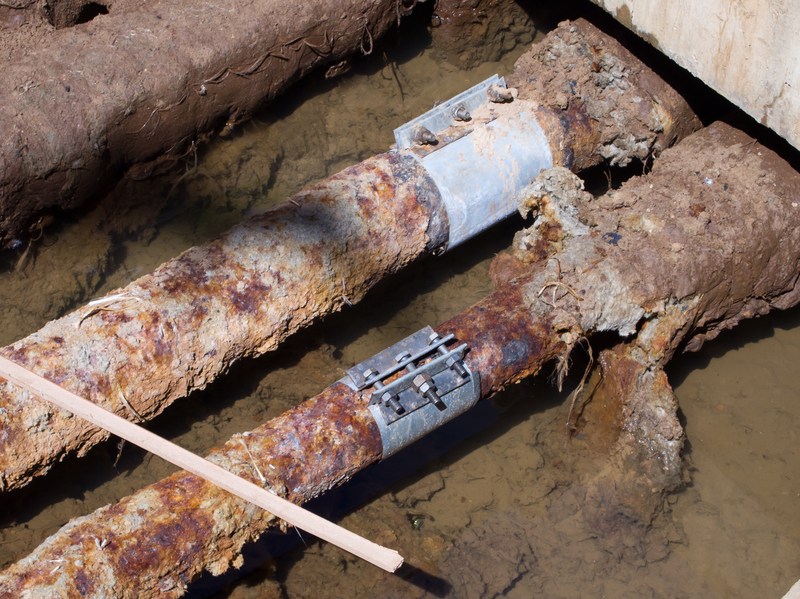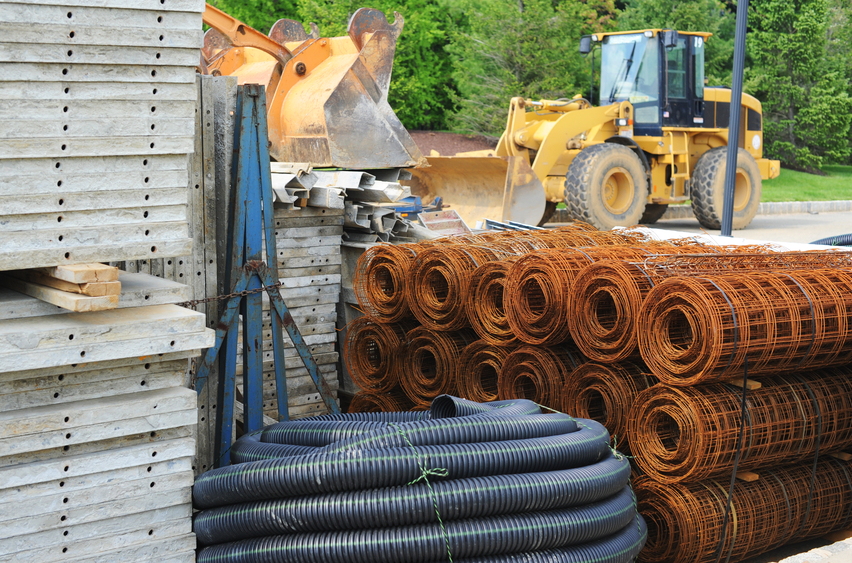Pennsylvania Materials and Ethics 24 PDH Discount Package 3
Courses in this Package
An Introduction to Cathodic Protection Principles (E05-006)
Introduction to Welding and Non-Destructive Testing (NDT) (T06-005)
Lubricants and Hydraulic Fluids - Overview (T04-008)
Lubricants and Hydraulic Fluids: Applications (T07-003)
Determining Negligence in Engineering Failures (LE2-012)

This online engineering PDH course will provide you with an introduction to the principles of cathodic protection for underground and underwater structures. You will be introduced to the physics and chemistry of the corrosion process and how to mitigate the corrosion using cathodic protection techniques.
Understanding the principles of cathodic protection systems is based upon understanding the nature of the corrosion process. The corrosion of metals is an electrochemical process. That is, it is an electrical circuit where the exchange of electrons (electricity) is conducted by chemical reactions in part of the circuit. These chemical reactions occur at the surface of the metal exposed to the electrolyte.
Cathodic protection is the prevention of corrosion by making a metal, which would ordinarily behave like an anode and corrode, behave like a cathode and be free from corrosive attack. Essentially, cathodic protection is predetermining the anode in the corrosion cell, or making a large corrosion cell to overcome the other smaller corrosion cells.
This 5 PDH online course is intended for civil engineers, structural engineers, mechanical engineers and other design and construction professionals seeking an introduction to the principles of cathodic protection.
This PE continuing education course is intended to provide you with the following specific knowledge and skills:
-
Understanding the chemistry and physics behind the corrosion process
-
Learning about the different types of corrosion activity
-
Knowing the corrosion rates for different metals
-
Understanding the importance of the galvanic series of metals
-
Understanding the fundamentals of the sacrificial anode approach to corrosion protection
-
Learning about the basics of the impressed current process
In this professional engineering CEU course, you need to review the course document titled, "An Introduction to Cathodic Protection Principles".
Upon successful completion of the quiz, print your Certificate of Completion instantly. (Note: if you are paying by check or money order, you will be able to print it after we receive your payment.) For your convenience, we will also email it to you. Please note that you can log in to your account at any time to access and print your Certificate of Completion.

This online engineering PDH course provides basic information to understand the basic principles of various testing methods, as well as details of typical applications, principles, advantages, and limitations in order to evaluate welds.
Welding is one of the most common type of joining method used in the industry. Welded components are subjected to thermal stress, which results in microscopic cracking, deformation, and hardening of the metal. Depending on the materials and the welding process, the consequences of heat input on the material surrounding the weld can compromise the material’s integrity or suitability for service.
The welded materials are subjected to destructive and/or non-destructive tests to ascertain these to be fit for purpose. Destructive testing has the drawback of destroying the test object in the process. Non-destructive tests on the other hand permit evaluation of the material or component without destroying it. To appropriately apply these inspection procedures, a certain level of skill is required. These tests are not simply for screening out bad products; they are also for assuring that what appears to be good is actually good.
This 6 PDH online course is applicable to mechanical engineers who are interested in improving their knowledge about the use of non-destructive and destructive testing methods to evaluate welds.
This PE continuing education course is intended to provide you with the following specific knowledge and skills:
- Familiarizing with the characteristics and properties of materials and steel alloys
- Familiarizing with the basic types of weld joints and their symbols
- Gaining a general overview on the commonly used welding processes
- Learning about the causes of welding defects and discontinuities along with the acceptance criteria of weld defects
- Understanding common mechanical destructive tests for establishing tensile strength, hardness, toughness, and impact resistance
- Exploring common non-destructive testing (NDT) methods including visual testing, penetrant testing, magnetic particle testing, eddy current testing, radiographic testing, and ultrasonic testing
- Learning about the types of equipment used for each non-destructive and destructive examination
- Understanding the advantages and limitations of various test methods
Upon successful completion of the quiz, print your Certificate of Completion instantly. (Note: if you are paying by check or money order, you will be able to print it after we receive your payment.) For your convenience, we will also email it to you. Please note that you can log in to your account at any time to access and print your Certificate of Completion.

This online engineering PDH course describes the basic principles, characteristics, properties, and applications of different types of lubricating oils.
This course is intended to be a practical guide to lubrication with enough technical detail to allow personnel to recognize and easily discern differences in performance properties specified in manufacturers' product literature so that the proper lubricant for a particular application is selected.
This 4 PDH online course is applicable to engineers, design and construction personnel, and other technical professionals who are interested in gaining a better understanding of lubricants.
This PE continuing education course is intended to provide you with the following specific knowledge and skills:
- Understanding the definition of friction and mechanisms of wear
- Understanding the basic principles of lubrication
- Learning about the different types and characteristics of lubricants
- Familiarizing with the applications of lubricants
- Learning about the basics of the lubrication oil and the production methods
In this professional engineering CEU course, you need to review Chapters 2 through 4 of the "Lubricants and Hydraulic Fluids" engineering manual, published by the United States Army of Corps of Engineers (USACE), Publication Number EM 1110-2-1424, dated January 29, 2016.
Upon successful completion of the quiz, print your Certificate of Completion instantly. (Note: if you are paying by check or money order, you will be able to print it after we receive your payment.) For your convenience, we will also email it to you. Please note that you can log in to your account at any time to access and print your Certificate of Completion.

This engineering online PDH course covers the lubricant specifications and selection, requirements of lubricants for different types of equipment as well as the operation and maintenance considerations.
This course is intended to be a practical guide to lubrication with enough technical detail to allow personnel to recognize and easily discern differences in performance properties specified in manufacturers' product literature so that the proper lubricant for a particular application is selected. In addition, this course discusses the considerations required to adequately maintain the integrity of the lubricants and ensure their effective performance.
This 7 PDH online course is applicable to engineers, design and construction personnel, and other technical professionals who are interested in gaining a better understanding of lubricants and hydraulic fluids.
This PE continuing education course is intended to provide you with the following specific knowledge and skills:
- Learning about the basic types of gears and the lubricants they require
- Understanding the basic characteristics of bearing lubrication and their application
- Familiarizing with the lubrication of miscellaneous applications including but not limited to stormwater pumps and motors, couplings, hoists and cranes, wire ropes, and chains
- Familiarizing with the operation, maintenance, and selection considerations of lubricants
Upon successful completion of the quiz, print your Certificate of Completion instantly. (Note: if you are paying by check or money order, you will be able to print it after we receive your payment.) For your convenience, we will also email it to you. Please note that you can log in to your account at any time to access and print your Certificate of Completion.

This engineering online PDH course will establish conditions under which, when an engineering failure has occurred, it can be attributed to negligence.
Five causes of failure are proposed: negligence, rare failure mode, overlooked failure mode, new (previously unrecognized) failure mode, and incorrect assessment of a known risk. Negligence is the only cause that involves failing in an ethical duty. These concepts are illustrated with five case studies of failures ranging from gross negligence to absolutely unforeseeable events: 1) the Great Boston Molasses Flood of 1919, for which a new possible cause was identified 95 years later (2014); 2) a building collapse in Bangladesh in which over 1,000 people died—one of the worst structural engineering disasters in history; 3) a meteorite strike of a private residence; 4) the crash of the British-French Concorde supersonic airliner, caused by an unlikely tire blow-out; and 5) radiation overdoses received by patients treated by the Thorac-25 medical linear accelerator, caused by errors in the software controlling the machine.
The 2 PDH online course is intended for engineers concerned with ethical behavior in engineering practice.
This PE continuing education course is intended to provide you with the following specific knowledge and skills:
- Understanding the definitions of negligence and standard of care
- Relating safety to risk
- Knowing the principle of Knightian uncertainty
- Avoiding the retrospective fallacy in accident investigations
- Avoiding the fallacy, in accident investigations, of assuming perfect engineering practice
- Using the results of failure investigations appropriately
- Being aware of the negative effects of punishment on learning from accidents
- Categorizing the general causes of engineering failures
Upon successful completion of the quiz, print your Certificate of Completion instantly. (Note: if you are paying by check or money order, you will be able to print it after we receive your payment.) For your convenience, we will also email it to you. Please note that you can log in to your account at any time to access and print your Certificate of Completion.